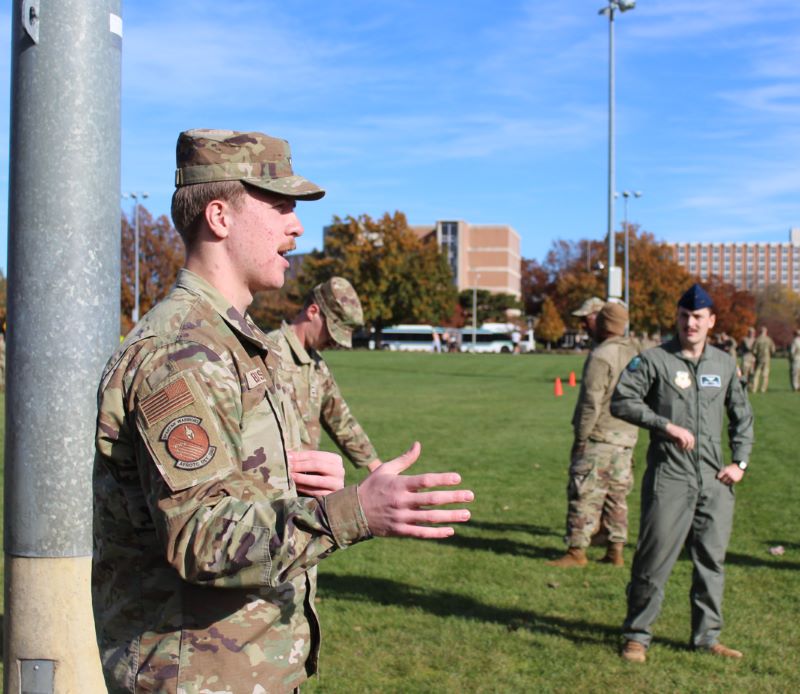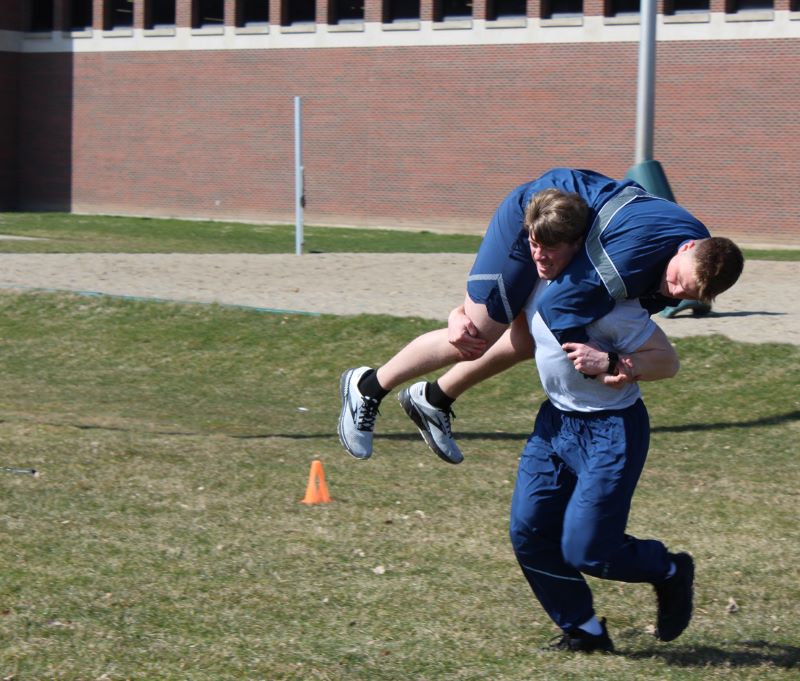
It’s spring 2020 and Michigan State University College of Engineering student Matthew Bush has had enough.
After participating in yet another virtual MSU Air Force ROTC Program event from his home in Grand Blanc, Mich., Bush knew exactly what he had to do.
He had to be all-in.
He had to commit his life to the U.S. Air Force and really get serious about serving his country.
So Bush studied harder, muscled through pull-ups on backyard trees, sweated his way through calisthenics workouts in his family room and ran his own 5K races on neighborhood streets.
Bush often asked himself: “What can I do to learn the most from my degree program and ROTC?”
His life-altering decision during a pandemic to be All-Air Force has paid off.
Now Bush is one of 15 Navy Federal Credit Union ROTC All-Americans.
These are considered the best and brightest ROTC seniors in the nation, the next generation of military leaders.
Bush was also recently named one of 33 cadets selected for Euro-NATO Joint Jet Pilot Training this spring.
These are accomplishments that fill this MSU mechanical engineering senior with gratitude.
“Become a better person that can do good things for other people,” Bush said of his goal. “It feels really good to know this effort had led to recognition.”

Air Force via Engineering
Bush follows a long line of MSU Engineering students who have thrived in the MSU Air Force ROTC.
The talent pipeline dates back to Spartan Engineering alum Lt. Gen. Gordon E. Fornell, a former special operations and test pilot. Fornell also studied mechanical engineering at MSU and graduated with a bachelor’s degree in 1958.
MSU Air Force ROTC leaders don’t recruit students. They work with students that pursue the program on their own.
Spartan engineers set a standard in the military because there are so many that are successful, MSU Air Force ROTC Capt. John Dolbee said.
“When our students go out and participate in Air Force activities (off-campus), they’re like ‘Man, it’s so weird because I was the only engineer,’” Dolbee said. “And we’re like, ‘No, that’s normal.’ There’s just something here about the university that attracts so many engineers and something that attracts so many engineers to our program.”
College of Engineering students make up about 30 percent of the MSU Air Force ROTC’s cadet classes annually. There are about 30 MSU Air Force cadets total this year, Bush said.
Bush recently applied for the Air Force ROTC STEM Graduate Scholars Program that specializes in hypersonics.
This technology involves speeds more than five times the speed of sound. It is used by the Air Force to build weapons and defense systems that track can them. The speed of sound equates to about 760 miles per hour.
If Bush is selected for the graduate program, his pilot training will be delayed and his tuition will be covered by the Air Force.
‘Highly academic needs’

In the Air Force, engineers can pursue numerous non-combat careers like weapons systems, facilities construction, aircraft maintenance, cyber intelligence and specialty electronics.
“It’s not all ‘Full Metal Jacket’ or what you may see in other movies,” MSU Air Force ROTC Commander Brenton Gaylord said. “There are tons of highly academic needs.”
Bush looks forward to furthering his training and getting as many flight hours as possible. His goal is to eventually become an astronaut.
If Bush is accepted to the hypersonics graduate program, his pilot training will be delayed because the program is aligned with National Defense Strategy standards for leader development.
“My commitment to service isn’t so much about wanting to reach this material goal of being an astronaut,” Bush said. “It’s about contributing as much as I can with all of the advantages and opportunities that I have had.”
A week in the life of an MSU Air Force ROTC cadet on campus includes two hours of physical training, two to five hours of aerospace studies and three hours of leadership development drills.
While Bush has maintained the academic pace to graduate this spring, he’s also found time to run a marathon and build strength in the MSU Air Force ROTC weight room. His combined bench press, back squat and dead lift exceeds 1,200 pounds.
His advice to any engineering student thinking about joining ROTC: Consider the benefits that come with challenging yourself.
“It doesn’t make things easier, but it makes you better,” Bush said of the program. “It makes you more able to face all the challenges that come with being an engineer.”
For more information about MSU’s Air Force ROTC Program, visit https://afrotc.msu.edu.
Written by Eric Lacy, lacyeric@msu.edu. See more at the Engineering Media and Public Relations page.